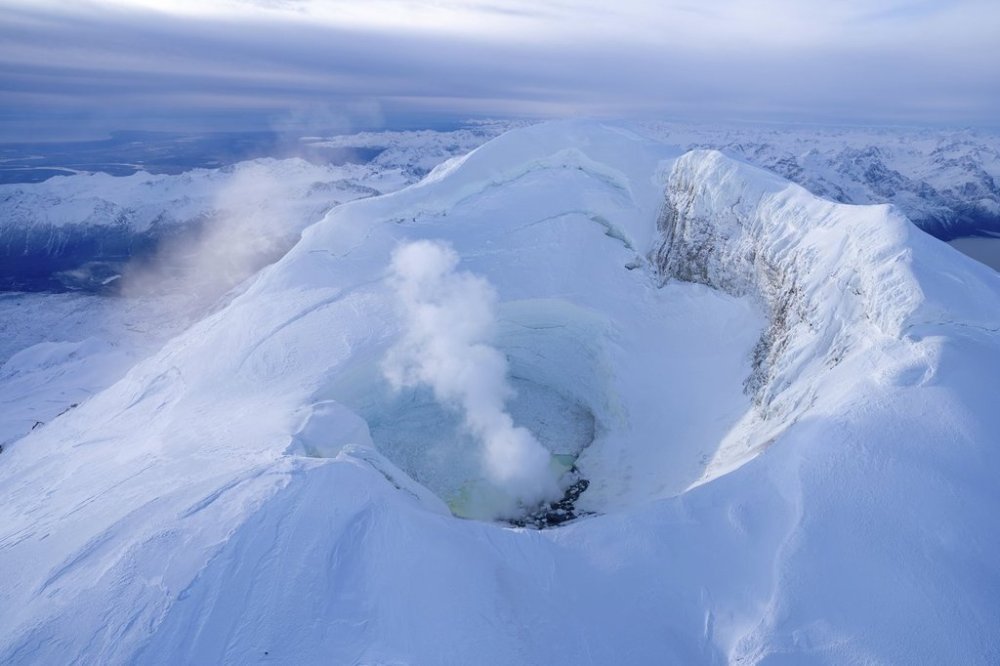A volcano near Alaska’s largest city could erupt in the coming weeks or months, scientists say
Advertisement
Read this article for free:
or
Already have an account? Log in here »
To continue reading, please subscribe:
Monthly Digital Subscription
$0 for the first 4 weeks*
- Enjoy unlimited reading on winnipegfreepress.com
- Read the E-Edition, our digital replica newspaper
- Access News Break, our award-winning app
- Play interactive puzzles
*No charge for 4 weeks then price increases to the regular rate of $19.00 plus GST every four weeks. Offer available to new and qualified returning subscribers only. Cancel any time.
Monthly Digital Subscription
$4.75/week*
- Enjoy unlimited reading on winnipegfreepress.com
- Read the E-Edition, our digital replica newspaper
- Access News Break, our award-winning app
- Play interactive puzzles
*Billed as $19 plus GST every four weeks. Cancel any time.
To continue reading, please subscribe:
Add Free Press access to your Brandon Sun subscription for only an additional
$1 for the first 4 weeks*
*Your next subscription payment will increase by $1.00 and you will be charged $16.99 plus GST for four weeks. After four weeks, your payment will increase to $23.99 plus GST every four weeks.
Read unlimited articles for free today:
or
Already have an account? Log in here »
Hey there, time traveller!
This article was published 12/03/2025 (242 days ago), so information in it may no longer be current.
ANCHORAGE, Alaska (AP) — A volcano near Alaska’s largest city is showing new signs of unrest, with experts saying the likelihood of an eruption at Mount Spurr in the next few weeks or months has increased.
The Alaska Volcano Observatory said Wednesday that it had measured during recent overflights “significantly elevated volcanic gas emissions,” and said signs indicated an eruption was likely, though not certain, in the weeks or months ahead.
“We expect to see further increases in seismic activity, gas emissions and surface heating prior to an eruption, if one were to occur,” the observatory said in a statement. “Such stronger unrest may provide days to weeks of additional warning.”

What is Mount Spurr?
It is an 11,070-foot (3,374-meter) tall, ice- and snow-covered volcano roughly 80 miles (129 kilometers) northwest of Anchorage.
Mount Spurr is one of 53 volcanoes in Alaska that have been active within the last 250 years. It has two main vents.
When did Mount Spurr last erupt?
The last known eruption from the summit vent was more than 5,000 years ago. The Crater Peak vent, meanwhile, erupted once in 1953 and three times in 1992, according to the observatory. The Crater Peak vent is about 2 miles (3 kilometers) south of the summit.
There have been periods of increased earthquake or other activity since then, including between 2004 and 2006, but no other eruptions. Last October, the observatory raised its alert status for Mount Spurr from green to yellow when an increase in seismic activity became pronounced and a ground deformation was spotted in satellite data.
The most likely outcome of the current unrest would be an eruption or eruptions similar to those in 1953 and 1992, the observatory said.
However, “It is also possible that no eruption occurs and the present activity slowly dies away or that a smaller eruption takes place,” John Power, a geophysicist with the U.S. Geological Survey at the observatory, wrote in an email.
What impacts could an eruption have?
The eruptions during the last century lasted between three and seven hours, produced ash columns that rose more than 50,000 feet (15,240 meters) above sea level and deposited ashfall in south-central Alaska communities, according to the observatory.
In 1992, ashfall of about a quarter-inch in Anchorage prompted residents to stay inside or to wear masks if going outside to avoid breathing ash. The cloud drifted as far as Greenland.
Volcanic ash is angular and sharp and has been used as an industrial abrasive. The powdered rock can cause a jet engine to shut down.
The 1992 eruptions prompted the temporary closures of airports in Anchorage and other communities.
Closing airports can be more than an inconvenience in a state where most communities aren’t connected to Alaska’s main road system. Ted Stevens Anchorage International Airport also is among the world’s busiest cargo hubs.


